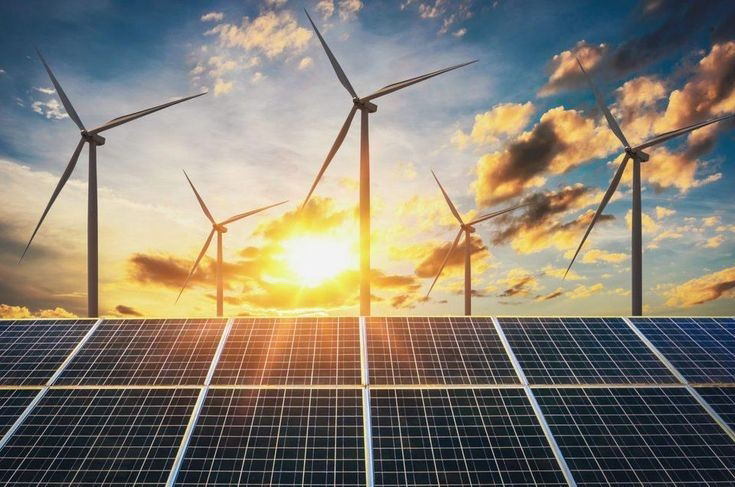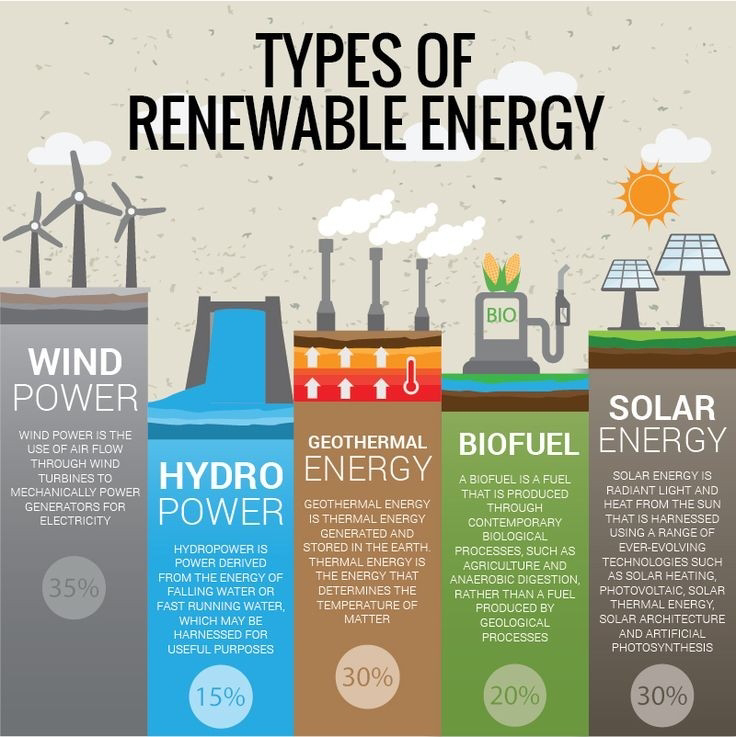An Inverter is an electronic device that converts direct current (DC) electricity into alternating current (AC) electricity.
This is useful because most household appliances and electronics run on AC power, whereas solar panels generate DC power.
Inverters are commonly used in solar panels systems to convert DC power to AC power for use in the home or to send back to the grid.
In addition, inverters can also be used in vehicles and boats to power appliances and electronics.
And don't on't forget to subscribe for more tech breakdowns
Welcome to SparkED, your ultimate destination for all things engineering, science, and innovation! Our blog is a vibrant platform dedicated to showcasing the latest advancements, groundbreaking research, and fascinating discoveries in the world of electrical engineering and beyond. At SparkED, we believe in the power of knowledge and its ability to ignite extraordinary ideas. Our team of passionate writers and researchers is committed to bringing you captivating articles.
Saturday, 13 May 2023
What is an Inverter?
 At SparkED, we strongly believe in supporting and promoting the work of young researchers and scientists. We are interested in featuring and showcasing the groundbreaking studies, experiments, and ideas of emerging talents who are pushing the boundaries of knowledge and innovation.
At SparkED, we strongly believe in supporting and promoting the work of young researchers and scientists. We are interested in featuring and showcasing the groundbreaking studies, experiments, and ideas of emerging talents who are pushing the boundaries of knowledge and innovation.
Thursday, 11 May 2023
Hydroelectric Power Plant
Let's talk about hydroelectric power plants.
Hydroelectric power is generated by the flow of water through turbines.
Hydroelectric power plants use dams to create and control the flow of water.
The energy produced by hydroelectric power is clean and renewable, making it a popular source of energy.
However, the construction of hydroelectric power plants can have negative impacts on surrounding ecosystems and communities.
Thanks for tuning in to this quick overview.
Labels:
#hydroelectric #powerplant
 At SparkED, we strongly believe in supporting and promoting the work of young researchers and scientists. We are interested in featuring and showcasing the groundbreaking studies, experiments, and ideas of emerging talents who are pushing the boundaries of knowledge and innovation.
At SparkED, we strongly believe in supporting and promoting the work of young researchers and scientists. We are interested in featuring and showcasing the groundbreaking studies, experiments, and ideas of emerging talents who are pushing the boundaries of knowledge and innovation.
Thursday, 4 May 2023
Synchronous Generators
There are several types of synchronous generators, which are mainly classified based on their field excitation and connection to the power grid. Here are some of the most common types:
1. Brushless synchronous generator: In this type of generator, the rotor field winding is excited by a DC power source located outside the generator. There are no brushes or slip rings needed to transfer the excitation current, hence the name "brushless."
2. Wound rotor synchronous generator: In this type of generator, the rotor field winding is made of a set of coils that are connected to slip rings. The slip rings allow for the application of an external DC voltage to the rotor field winding.
3. Permanent magnet synchronous generator (PMSG): In this type of generator, the rotor has permanent magnets instead of a field winding. PMSGs are commonly used in wind turbines and other renewable energy systems.
4. Standalone synchronous generator: This type of generator is not connected to the power grid and is used for off-grid power generation applications. It typically requires a voltage regulator and a control system to maintain a constant output voltage and frequency.
5. Grid-connected synchronous generator: This type of generator is connected to the power grid and is used to supply power to the grid or to provide backup power in case of a power outage. It typically requires a synchronizing system to ensure that the generated voltage and frequency are synchronized with the grid.
Overall, the type of synchronous generator used depends on the specific application and the desired performance characteristics.
 At SparkED, we strongly believe in supporting and promoting the work of young researchers and scientists. We are interested in featuring and showcasing the groundbreaking studies, experiments, and ideas of emerging talents who are pushing the boundaries of knowledge and innovation.
At SparkED, we strongly believe in supporting and promoting the work of young researchers and scientists. We are interested in featuring and showcasing the groundbreaking studies, experiments, and ideas of emerging talents who are pushing the boundaries of knowledge and innovation.
Wednesday, 3 May 2023
Estimating the Output of a Solar Power Plant
Estimating the energy output of a photovoltaic (PV) plant involves several factors, including the location, orientation, efficiency of the PV panels, and weather conditions. Let me explain each of these factors in more detail.
1. Location: The amount of solar irradiation that a PV panel receives is determined by its geographic location. The amount of solar irradiation is measured in kilowatt-hours per square meter per day (kWh/m²/day) and is affected by factors such as latitude, altitude, and weather patterns. The closer a location is to the equator, the more sunlight it will receive.
2. Orientation: The orientation of the PV panels also affects the amount of solar irradiation that they receive. Ideally, the panels should be facing toward the equator, and the tilt angle should be equal to the latitude of the location. This will maximize the amount of solar energy that the panels can absorb.
3. Efficiency: The efficiency of the PV panels is another factor that affects the energy output of a PV plant. The efficiency of a panel is the percentage of sunlight that is converted into electrical energy. Generally, higher-efficiency panels will produce more energy than lower-efficiency panels.
4. Weather conditions: The amount of sunlight that a PV plant receives is affected by weather conditions such as cloud cover and temperature. Cloudy days will reduce the amount of solar irradiation that the panels receive, while high temperatures can reduce the efficiency of the panels.
To estimate the energy output of a PV plant, we can use a tool called a performance model. A performance model is a mathematical model that takes into account the various factors that affect the energy output of a PV plant, including location, orientation, efficiency, and weather conditions. The output of a performance model is the expected energy output of the PV plant, usually expressed in units of kilowatt-hours (kWh).
There are different types of performance models, but they all generally use the same basic inputs. These inputs include:
1. Solar irradiation data: This is data that provides information about the amount of solar irradiation that a PV panel receives at a particular location. Solar irradiation data is typically measured in units of kilowatt-hours per square meter per day (kWh/m²/day) and can be obtained from sources such as weather stations or satellite data.
2. PV panel specifications: This includes information about the efficiency and performance characteristics of the PV panels that will be used in the plant. This information can be obtained from the panel manufacturer or from independent testing organizations.
3. System design data: This includes information about the orientation and layout of the PV panels in the plant, as well as other system design details such as the inverter efficiency and losses due to wiring and shading.
4. Weather data: This includes information about the weather conditions at the location of the PV plant, including temperature, humidity, wind speed, and cloud cover.
Using these inputs, a performance model will calculate the expected energy output of the PV plant. The accuracy of the performance model will depend on the quality and accuracy of the inputs, as well as the complexity and sophistication of the model itself.
In addition to using a performance model, it is also common to use actual data from the operation of the PV plant to estimate its energy output. This is done by measuring the actual energy output of the plant over a period of time and comparing it to the expected energy output calculated by the performance model. If there are significant differences between the expected and actual energy output, adjustments can be made to the performance model to improve its accuracy.
here are a few more details on how the energy output of a PV plant can be estimated:
1. Inverter efficiency: The efficiency of the inverter, which converts the DC power generated by the PV panels into AC power that can be used by the electrical grid, can also affect the energy output of the PV plant. Inverter efficiency is the ratio of AC power output to DC power input and is typically around 95-98%.
2. Shading and obstructions: Shading and obstructions, such as nearby buildings or trees, can reduce the amount of sunlight that reaches the PV panels and therefore reduce the energy output of the PV plant. A shading analysis can be conducted to identify areas of the PV array that are shaded and to determine the extent of the shading.
3. Temperature: The efficiency of PV panels decreases as temperature increases. The amount of energy produced by the PV panels can be reduced by 0.5% for every degree Celsius above 25°C. Therefore, the expected temperature at the location of the PV plant should be taken into account when estimating the energy output.
4. Degradation: Over time, PV panels can degrade and lose efficiency. This degradation can be caused by various factors, such as exposure to UV radiation and high temperatures. The rate of degradation can vary depending on the type of PV panel and the environmental conditions at the location of the PV plant.
Overall, estimating the energy output of a PV plant requires taking into account multiple factors, such as location, orientation, efficiency, weather conditions, and system design. By using a performance model and actual data from the operation of the plant, it is possible to estimate the energy output of the PV plant with a reasonable degree of accuracy.
Labels:
#Solar #PV #Plant #Energy
 At SparkED, we strongly believe in supporting and promoting the work of young researchers and scientists. We are interested in featuring and showcasing the groundbreaking studies, experiments, and ideas of emerging talents who are pushing the boundaries of knowledge and innovation.
At SparkED, we strongly believe in supporting and promoting the work of young researchers and scientists. We are interested in featuring and showcasing the groundbreaking studies, experiments, and ideas of emerging talents who are pushing the boundaries of knowledge and innovation.
Sunday, 23 April 2023
Renewable Energy
Renewable energy is energy that comes from sources that are naturally replenished over time, such as sunlight, wind, rain, tides, waves, and geothermal heat. Renewable energy technologies can be used to generate electricity, heat and cool buildings, and produce fuels for transportation.
Renewable energy is becoming increasingly important as the world faces a growing energy crisis and the threat of climate change. Renewable energy sources are abundant, clean, and sustainable, and they can help to reduce our reliance on fossil fuels.
There are many different types of renewable energy technologies, including:
* **Solar energy:** Solar energy is the most abundant renewable energy source on Earth. Solar panels can be used to generate electricity or to heat water.
* **Wind energy:** Wind turbines can be used to generate electricity from the wind.
* **Hydropower:** Hydropower is generated by the movement of water, such as in rivers or dams.
* **Geothermal energy:** Geothermal energy is heat that comes from the Earth's interior. It can be used to generate electricity or to heat buildings.
* **Biomass:** Biomass is organic material that can be used to produce energy. Biomass can be burned to generate heat or electricity, or it can be converted into biofuels.
Renewable energy is a rapidly growing industry, and there are many opportunities for jobs in renewable energy. If you are interested in a career in renewable energy, there are many different paths you can take. You can work in engineering, sales, marketing, or policy. With a growing demand for renewable energy, there is no better time to get involved in this exciting field.
Here are some of the benefits of renewable energy:
* Renewable energy is clean and sustainable. It does not produce greenhouse gases or other pollutants that contribute to climate change.
* Renewable energy is abundant and widely available. It can be used anywhere in the world, regardless of location.
* Renewable energy is becoming increasingly affordable. The cost of solar panels and wind turbines has fallen dramatically in recent years, making renewable energy more competitive with fossil fuels.
* Renewable energy can help to create jobs and boost the economy. The renewable energy industry is a major source of new jobs, and it is expected to continue to grow in the coming years.
Overall, renewable energy is a clean, sustainable, and affordable source of energy that can help to address the challenges of climate change and energy security.
 At SparkED, we strongly believe in supporting and promoting the work of young researchers and scientists. We are interested in featuring and showcasing the groundbreaking studies, experiments, and ideas of emerging talents who are pushing the boundaries of knowledge and innovation.
At SparkED, we strongly believe in supporting and promoting the work of young researchers and scientists. We are interested in featuring and showcasing the groundbreaking studies, experiments, and ideas of emerging talents who are pushing the boundaries of knowledge and innovation.
Electrical Engineering
As the world becomes increasingly interconnected and digital, the demand for electrical engineers is only going to grow.Here are some of the topics in electrical engineering:
* **Renewable energy:** The world is increasingly moving towards renewable energy sources, such as solar and wind power. This is driving innovation in electrical engineering, as engineers develop new ways to harness and store renewable energy.
* **Smart grids:** Smart grids are electrical grids that use digital technology to improve efficiency, reliability, and security. They are becoming increasingly common as governments and utilities look for ways to modernize their infrastructure.
* **Electric vehicles:** Electric vehicles are becoming more popular as they become more affordable and efficient. This is driving demand for new electrical engineering technologies, such as battery storage and charging infrastructure.
* **Microelectronics:** Microelectronics are the tiny components that make up electronic devices, such as computers and smartphones. They are constantly evolving, as engineers develop new ways to make them smaller, faster, and more powerful.
* **Power electronics:** Power electronics are used to convert and control electrical power. They are used in a wide range of applications, such as electric vehicles, solar panels, and wind turbines.
These are just a few of the topics in electrical engineering.
 At SparkED, we strongly believe in supporting and promoting the work of young researchers and scientists. We are interested in featuring and showcasing the groundbreaking studies, experiments, and ideas of emerging talents who are pushing the boundaries of knowledge and innovation.
At SparkED, we strongly believe in supporting and promoting the work of young researchers and scientists. We are interested in featuring and showcasing the groundbreaking studies, experiments, and ideas of emerging talents who are pushing the boundaries of knowledge and innovation.
Wednesday, 19 April 2023
Benefits of dedicated power line from substation to a Hospital
There are several benefits to connecting a hospital directly to a substation for power.
1. Increased reliability: A direct connection to a substation provides a more reliable power source than relying on the local power grid. This is important for hospitals, which need to have a constant supply of power to operate critical equipment.
2. Reduced downtime: A direct connection to a substation can help to reduce downtime in the event of a power outage. This is because the hospital will be able to draw power directly from the substation, even if the local power grid is down.
3. Improved patient care: A reliable and consistent power supply is essential for providing quality patient care. A direct connection to a substation can help to ensure that hospitals have the power they need to operate critical equipment and provide safe and effective care for their patients.
In addition to these benefits, connecting a hospital directly to a substation can also help to improve the hospital's bottom line. By reducing downtime and improving patient care, hospitals can save money on costs associated with power outages, such as lost revenue and medical malpractice claims.
The cost of connecting a hospital directly to a substation can vary depending on the size and location of the hospital. However, the benefits of a direct connection can often outweigh the costs.
 At SparkED, we strongly believe in supporting and promoting the work of young researchers and scientists. We are interested in featuring and showcasing the groundbreaking studies, experiments, and ideas of emerging talents who are pushing the boundaries of knowledge and innovation.
At SparkED, we strongly believe in supporting and promoting the work of young researchers and scientists. We are interested in featuring and showcasing the groundbreaking studies, experiments, and ideas of emerging talents who are pushing the boundaries of knowledge and innovation.
Subscribe to:
Comments (Atom)
-
Transformers are rated in kVA (kilovolt-amperes) because they supply both active (real) and reactive power, and their losses dep...
-
Why Grounding Wires Are Not Insulated? Grounding wires, also known as earthing wires, are left uninsulated for safety reasons. Here are some...
-
In a three-phase system, the voltage between two phases is not simply the sum of the individual phase voltages (220V + 220V = 44...













